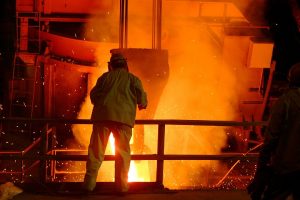
Statistics show steelmakers in the United States produced over 95 million tons of the iron-carbon alloy in 2018 — the industry’s highest level of production in over a decade. Consisting mostly of iron with about 0.03 to 1% carbon, it’s a versatile metal with some unique properties. Steel has a high tensile strength and low production cost, making it preferable among manufacturing companies over other metals.
But not all steelmakers use the same process to produce steel. Some companies use a hot-forming process, whereas others use a cold-forming process. The terms “hot forming” and “cold forming” are somewhat misleading, however. In both processes, raw steel is smelted at hot temperatures reaching up to 2,500 degrees Fahrenheit. Nonetheless, cold-formed steel requires a different approach to produce than its hot-formed counterpart.
What Is Cold-Formed Steel?
Also known as cold-rolled steel, cold-formed steel is characterized by a finishing technique in which the molten raw steel is compressed using rollers at a relatively low temperature. In comparison, hot-formed steel is compressed at hot temperatures exceeding the metal’s re-crystallization point, which is typically around 1,000 degrees Fahrenheit for most types of steel. In both processes, raw steel is first smelted and then fed through rollers. The difference is that hot-formed steel involves a higher temperature during the rolling process than cold-formed steel.
While using a lower temperature to roll steel may sound counterproductive, it’s actually beneficial because it increases the metal’s strength. In fact, research shows that cold-formed steel is about 20% stronger than hot-formed steel.
The Steps to Producing Cold-Formed Steel
To produce cold-formed steel, steelmakers first smelt raw steel in a large furnace. After the raw steel has smelted down to liquid, it’s allowed to cool slightly before being fed through a series of rollers. As the steel is forced through the rollers at a low temperature, it becomes both thinner and stronger.
When steel is fed through the rollers, it’s naturally compressed. And because this occurs at a lower temperature with cold forming than hot forming, cold-formed steel is stronger and more durable. After allowing the cold-formed steel to cool — yes, it may still be somewhat hot after pressing — it’s removed from the rolling machine.
The downside to cold-formed steel is that it’s more difficult to produce than hot-formed steel. Steel isn’t particularly malleable, especially at cool or room temperatures. In some cases, cold forming can’t be used for this reason. But hot forming exposes the raw steel to rollers at
Find out what the difference is between cold-rolled steel and hot-rolled steel.
